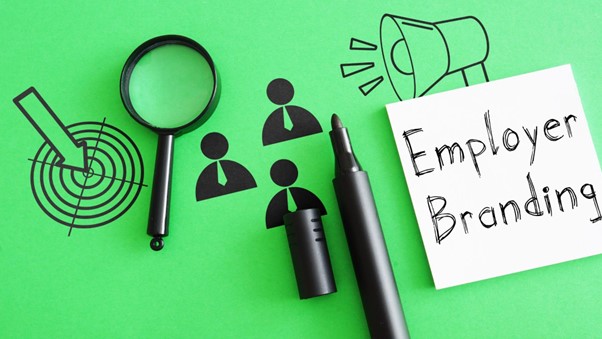
22 May The Role of HR Professionals in Employer Branding
The influence of a company’s branding extends beyond its customers. You’ve also got to think about how employees and future employees see your business.
This is where employer branding comes in. To make your company stand out from other potential destinations for candidates, you need to follow many of the same principles marketers use. Among these are consistency, distinctiveness and suitability to your target audience.
As an HR professional, you play an important role in how your business is perceived by potential candidates. Ensure that it’s seen as an attractive place to work and entice the best talent to work for you by following these tips.
Build A Distinct Brand Through Physical Symbols
One of a brand’s main goals is to stand out. Companies can achieve this by branded sign printing, the creation of branded merchandise like pens and water bottles, and more. This is a strategy that is simultaneously difficult to notice and everywhere.
A benefit of putting your brand in as many places as possible is that it reminds your employees of who you are as a brand and what you stand for. It reminds them that they’re working at your company and not somewhere else. It also creates a sense of unity by bringing everyone together under one banner, as it were.
Be Your Company’s Number One Evangelist
HR is the bridge between a company and its talent. If you work in recruiting, you’re likely to be a potential candidate’s first point of contact with the business. If you’re in charge of taking care of existing staff, you represent the company in how you treat each and every employee.
When conducting job interviews, make sure you transmit your company’s values to potential hires. Give them the space to ask as many questions as they want, and answer authentically. Make sure you do a good job of selling them all the benefits of working with you, and show them a clear path of development based on their career goals.
When dealing with existing employees, remember to treat everyone equally, no matter their position. If someone files a complaint, ensure that the solutions you come up with are not at all influenced by the positions of either party.
Align With Your Marketing Team
While HR and marketing are often seen as two distinct departments of a business, it’s imperative that the two work together. You want to present a united company image to both customers and potential employees. This is doubly true when it comes to brand values. To convince people that you’re genuine in your beliefs, they need to be stated clearly and consistently.
To achieve this, it’s vital that you, as an HR professional, are in constant contact with your marketing team. Start with key brand elements: fonts, brand colours, important slogans, and others should be consistent whether you’re posting on Instagram, Facebook or LinkedIn.
You’ll also have a better idea of what the candidate field looks like, which means that you can give your marketing/brand colleagues some insights on how to best design brand and marketing campaigns based on what potential hires might respond to.
Build An Attractive Culture
The key to attracting and keeping the best talent is to create a culture where everybody can reach their maximum potential. This means making your work environment as comfortable and productive as possible.
This is not something HR professionals can do alone. You need to align with the company’s managers, whose job it is to lead the troops on the ground, to create overall guidelines. Every company needs to have a set of responses to situations like workplace conflict and major errors. Make sure to hire managers whose leadership style matches your business culture to make this process as seamless as possible.
An important part of building a united culture is recognising and working with individual differences. People are responding to different sorts of treatment and communication. Some might work best with a straightforward, results-based management style, while others might thrive in a caring, supportive environment. Take the time to understand your employees as people first and workers second and tailor how you deal with them according to their individual needs.
~
Employer branding involves how you present yourself to potential employees. To achieve the best results and attract candidates who fit your company’s culture, you need to be clear to them about who you are as a brand and what your values are. HR professionals need to be at the forefront of this, as they’re the company’s first point of contact with employees and future employees.
In this article, we’ve gone over some key ways HR professionals can apply branding principles to achieve an attractive employer image. If you can present yourself consistently, uniquely and most of all authentically, you’ve got a great shot at getting the best people to work for you.
About The Author
Ainsley Atinon is a digital marketing specialist who has helped businesses all over the world expand their online presence. He has worked in online advertising, social media management, content marketing, search engine optimisation and more. He has also helped the HR teams at the various businesses he’s worked with improve employer branding.
No Comments